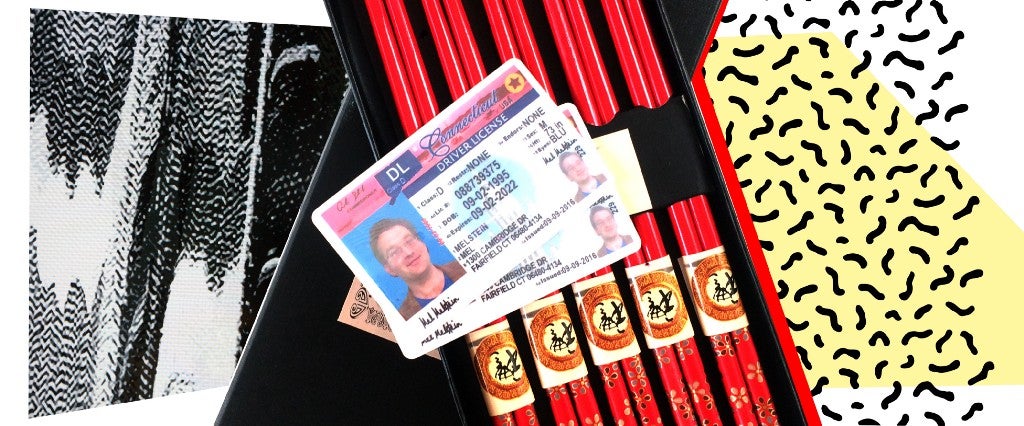Andy’s* first fake ID arrived from China a few weeks into his freshman year of college.
He and a friend, both 18, decided they had better get IDs to buy beer, so they placed an order with IDGod, the biggest online fake ID vendor in the world. IDGod is both the name of the vendor and a real person, Andy explains; he first heard the name as a sophomore in high school from seniors who were getting their own IDs. “He’s a god, basically. A group of Chinese men — they may be gangsters or involved in organized crime, no one really knows for sure — formed IDChief, a huge fake ID operation that sold to teens in the U.S.,” he continues. “As they got bigger, tension grew on the inside, and they separated into different ‘companies,’ one of which became IDGod, which proved to be the most successful.”
Now a 19-year-old college sophomore in the Midwest, Andy has accumulated at least 20 more fake IDs. His reasoning is obvious (and timeless): Generation after generation, a fake ID has been a teenager’s golden ticket to a previously inaccessible realm of grown-up vices (booze, bars and casinos), making them both a Hollywood teen movie trope and a must-have for the not-quite-20-something.
You might think Andy doesn’t need two dozen fake IDs, but how else can he keep up with the rapid pace of technological innovation? “There are things people do to make sure they have the best product on the market, which is why people like me have so many IDs.” He showed me a couple photos of his latest — a fake Utah license considered to be one of the best currently on the market. (It certainly looked legit to me.) The key, he says, is replicating the unique perforations and microprint that are present on most real IDs under an ultraviolet light.
He suggests holding my California ID up to the light and looking for a small bear, one of the Golden State’s perforations. These are the security features a discerning fake ID customer looks for when shopping for vendors, since they’re the first things seasoned bouncers and liquor store owners look for when trying to spot a fake, and they’re nearly impossible to replicate without sophisticated machinery.
The biggest goal, however, is beating a fake ID owner’s worst nightmare: The box scanner. The small box shows all the ID’s information on a screen that a bouncer, store owner or casino worker can easily look at to spot a fake. Box scanners scan the entire front and back of an ID and compare it to a real one. And as there are no perfect fake IDs, there’s no way to pass the scanner’s test. Thankfully, Andy says, they aren’t that common; they are mostly in our country’s preeminent college town, Boston.
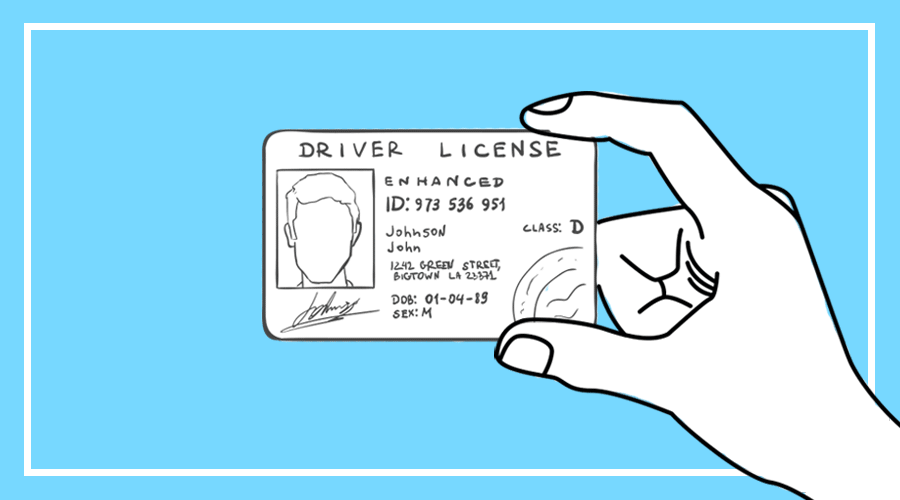
For Andy, though, the best part of his fake IDs, which he’d like to collect from all 50 states, is that he uses them for far more than just buying booze. They’re a way to enrich your life, he says. If a museum in Chicago is offering half-price admission for state residents, he’ll whip out his fake Illinois ID. If the Bronx Zoo is running a similar promotion, he’s got a New York one.
But back to more traditional means: I ask Andy how his fake ID helps him with his romantic pursuits, since that’s a common motivator for male teens procuring them — it certainly was for the guys in Superbad. “I can’t really answer that question because I have a longtime girlfriend,” he says, noting that she also has a fake ID. That said, he enjoys going out and having a beer at dinner with her because it makes the relationship feel more mature. Same for when he’s hanging out with his friends: “I love buying them drinks and just relaxing with them after a long week. I don’t think I have more access to the world with a fake ID—I just have access to the more adult aspect of the world.”

The fake ID racket wasn’t always so easy. In 1994, one of my 10th-grade classmates in boarding school purchased a fake ID kit from a graduating senior for $700. Even at 15, Phil* had a remarkable entrepreneurial spirit and naturally gravitated toward the prospect of cornering the fake ID market at our New England prep school. “Once I got out of the red,” he remembers thinking, “I’d be minting money.”
The $700 included a giant industrial laminator that hummed like a Xerox machine and took 20 minutes to warm up; a handful of overhead projector transparencies; a floppy disk containing a fraudulent template from the New Hampshire DMV; a signature from its commissioner; and a tutorial on how to combine them all to produce a license permitting the bearer to operate a motor vehicle in the state of New Hampshire. I was among Phil’s first customers and chose “Frederick Lunt,” a name I’d recently seen in my European history textbook. My roommate was “Stephen J. Olmstead,” and the Cuban across the hall went with “Muhammad Schnitzel.”
But Phil underestimated both the demand for his counterfeit product and the learning curve required to meet it, which involved a complicated, multi-step process. It included taking a specialized Polaroid photo in front of a blue towel hung over his dorm room door, placing it in an ID-cutting machine and stripping off the back layers to leave only a razor-thin photo. “But the guy [I bought if from] didn’t mention you needed a laser printer to print these things out,” he recalls. “I quickly learned the Inkjet Stylewriter 2 my parents bought me wasn’t gonna cut it.”
The only laser printer in the dorm was owned by Bill and Ross Wang — students from China who had been urged by the school to adopt “easier-to-pronounce” English names. “I had to lie to the Wang brothers and say I was printing out important legal documents,” Phil says.
“Eventually, though, the younger Wang caught me and told his brother who said, ‘We know what you’re printing on our computer. I’m not going to turn you in, but never come near our room again.’”
But word had already spread that there was a kid in the sophomore dorm making near-perfect replicas of Granite State IDs. The next day, Phil returned to find five seniors sitting in his room who wanted to attend an over-21 party at Stratton Mountain the following weekend and would kick his ass if he didn’t come through.
As a result, Phil had to make five IDs in a week — with no laser printer — or risk being beaten by five much larger males. Drawing on his aforementioned entrepreneurial prowess, he sneaked into the school computer lab to print them out, then quickly deleted the files from the common-use computer. “If I screwed anything up — if the lamination was off, if the picture slipped, if the ink smudged — I had to start all over again,” he remembers. “And if I was caught by a teacher, I’d be kicked out of school.”
The trademark of these IDs — and what managed to dupe hundreds of unsuspecting bouncers throughout New England — was a signature from the director of the New Hampshire DMV running vertically up the edge of the photo. Phil would take a piece of blue paper, tape on the stripped-down polaroid, add the vertical signature on a piece of transparency and feed it all into the laminator. If you added up the time of every step — the setup for the picture, taking the actual picture, finding a laser printer, printing out the ID on blue paper, transparencies, cutting board time, laminating it, etc. — it easily took two hours to make each fake ID.
“I would say a Hail Mary every time I sent them through, even though I am Jewish, because of all the work it would take just to get to that point,” Phil says.
He managed to pull it off, though, and the seniors were extremely grateful upon returning from Stratton. “In fact, some said my IDs were the only way they could get the much-needed booze for all the parties that weekend,” Phil boasts. As such, he quickly became the most popular and sought-after kid on campus. In total, Phil made 35 IDs and sold them for $50 a piece, totaling $1,700 — or roughly $24 an hour. “For a high school kid in 1994, that was a lot,” he says. “But still not worth it, of course.”

These days, to no one’s the surprise, the fake-ID industry has moved online. Most teenagers order fakes as they might cellphone accessories on Amazon. But vendors aren’t in Seattle, they’re in China — whose packages are seized daily at U.S. airports. As Bill Rivera, chief of the International Mail Branch at Kennedy International Airport told The New York Times in 2015, in the preceding year, 4,585 Chinese-made counterfeit IDs were intercepted, most of them headed to college students. “Quite frankly, some of them look pretty good,” he admitted.
It’s obviously daunting for teens to do business with nameless, faceless vendors in faraway lands, which is why entire online communities have sprung up to vet them. The Fake IDs subreddit, for example, where I met Andy, allows people to share accounts of their experience, links to bar books (which bouncers reference to verify authenticity) and a list of trusted vendors. For example, if a name is bolded, it signifies the vendor is considered “exemplary” and has produced “instate passable” IDs for more than 12 months without delays.
“The process usually begins with someone saying he’s going to buy a fake ID online,” explains Jack, a 20-year-old sophomore at Marquette University. That person collects cash from friends and acquaintances also looking for a fake ID and makes a bulk purchase, since if you buy multiple fake IDs, the price can be reduced by almost a third — that is, going in with seven friends can drop the price to as low as $40 per ID as opposed to IDGod’s typical range of $100-$200.
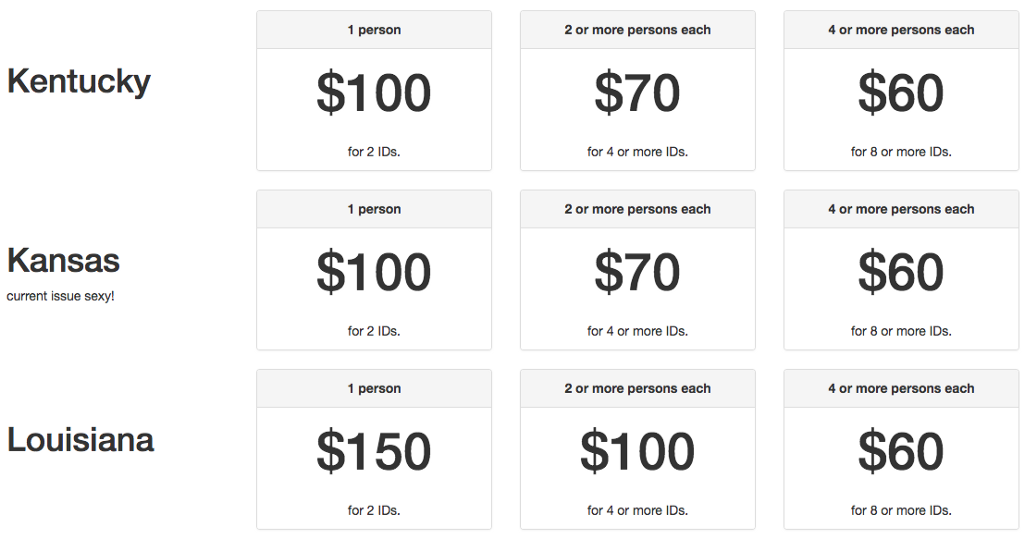
While today’s process is short on complexity compared to Phil’s, it’s long on sketchiness. I recently purchased a Connecticut ID from IDGods under the name “MEL MELSTEIN” for double the price I paid in 1994: $100 for two, in case one gets confiscated.
The options for payment were Bitcoin and Western Union; since I’m neither a Russian hacker nor a Dark Web impresario, I opted for the latter. As I waited in line at the Western Union near the MEL office in Venice, clutching $114 cash (plus handling fee) for an untraceable money order addressed to one “Jianfeng Chen,” I couldn’t imagine the experience as a teenager, which is likely why I’ve found zero teens who’ve ordered them this way. (Most of them use Bitcoin.) Western Union is a decidedly grown-up affair: “Services are directed solely to persons 18 and over,” the terms and conditions explain; In other words, you might need a fake ID to order a fake ID via Western Union.
As Jack, the Marquette sophomore points out, fulfillment of orders is hardly certain, either. “I have a friend who purchased a fake ID for $80 four months ago, and he still hasn’t gotten it,” he says. “It’s extremely uncertain and sketchy, which is why kids are hesitant to do it.”
But, of course, they still do.
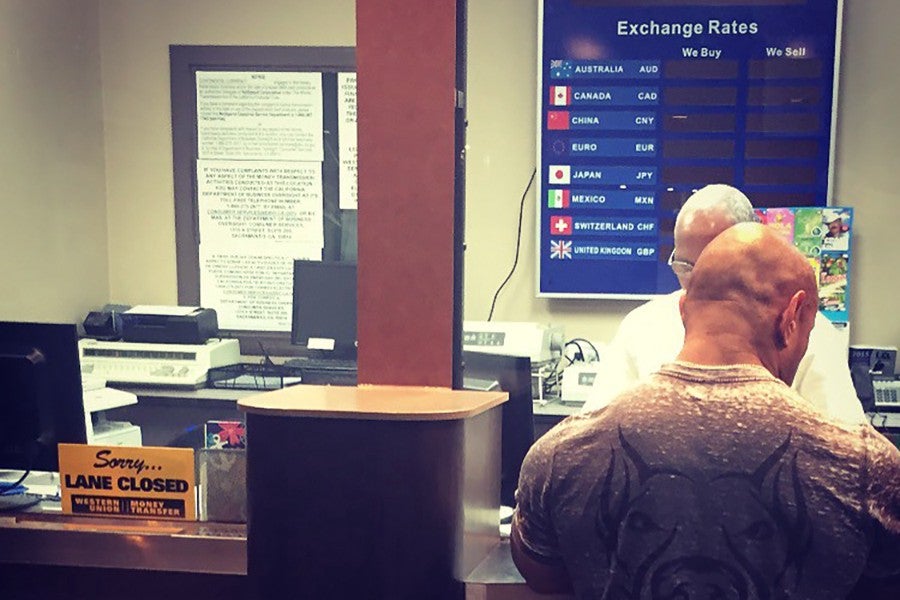

“I’ve confiscated four,” says Rachel, a 22-year-old resident assistant at Marquette. “One from Wisconsin, which I thought was quite bold because we’re in Wisconsin; one from Hawaii; and one from Washington. They said they all got them online. The most memorable was when we were dealing with an over-intoxicated girl. I looked over and saw an Illinois ID on her desk. That caught my eye because I live in Illinois. It was a really nice replica. Minus a few color differences — a lighter blue versus a darker blue, a lighter red versus a darker red — it was spot-on.”
Law enforcement has technology more sophisticated than the keen eye of an RA. “DMV investigators regularly provide training in how to detect fraudulent documents upon request to local area bars and casinos,” says Artemio Armenta of the California Department of Motor Vehicles. “For many years, the DMV Investigations Division has actively conducted investigations to combat the sale and manufacture of counterfeit DMV documents throughout the state and on the internet.”
Law enforcement has gone high-tech with things like BarZapp™, an ID-checking mobile app developed by Intellicheck that allows users to aim their smartphone at the barcode on a driver’s license to instantly read and verify the encoded information and display the results — including the bearer’s name, date of birth, ID expiration and ID number.
Andy hasn’t gotten in trouble for his fake ID yet. In large part, he believes it’s because he’s not stupid about it. His roommate, on the other hand, is known to brag to everyone and anyone about his fake, including people outside of liquor stores and bars he’s about to enter. “He’s yet to lose his ID, but I plan on that day coming very soon,” Andy says. “The number-one rule for fake IDs is don’t talk about your fake ID.”
Back in 1994, Phil’s jig was up when our headmaster called him into his office junior year. “He said, ‘I want you to make me a list of every person you made a New Hampshire fake ID for at this school,’” he remembers. One of Phil’s clients had been arrested in Seattle over the summer for using his fake ID at a liquor store. The cops sent the ID to the FBI, who called up the kid’s family and said, “We need to know where your son got this.”
“He immediately gave them my name,” Phil says. The local FBI bureau called the headmaster and said, ‘You should know someone at your school is making fraudulent identification. We’re not going to take further action since this is a private institution, but we’ll leave it to you to discipline the student.”
Phil explained to the headmaster that he no longer made fake IDs; it proved to be a lousy business and his grades were suffering. “I said, ‘If you want to kick me out, kick me out, but I’m not going to give you a list of my friends like some rat’ — this was a man who studied Chinese history throughout his academic career, and rats in ancient China were considered worse than murderers.” As a condition of not getting kicked out, Phil was forced to hand over the program disc, enabling the headmaster to finally put an end to fake ID production at the school.
“I’m going to respect that and not kick you out, because someone ratted you out,” the headmaster said. “But if I get another call from the FBI, I’m going to give them your parents’ number.”
“He was smart: Had he kicked me out I could have just sold the program to someone else there,” Phil adds. “And I probably would have.”
As for Andy, it isn’t the threat of getting caught that has made him want to slow down on his quest to collect all 50 IDs by 25. Instead, he says he’s realized the persistent risk-taking it involves is, ironically, immature. He’d prefer to sit across from his girlfriend sipping IPAs, not making any trouble — you know, like adults.
Still, Andy views his procurement of fake IDs as a political statement. “The only reason fake IDs exist is because of the laws this country has put in place to prevent us from drinking. The fact is, I will never take a bullet for this country if I can’t have a legal beer and I will stick to this belief forever.”

Nine weeks after placing my order with the faceless IDGod, I’d reached the conclusion that my ID would never come. Then, one day last week, I came upon a small unmarked box from China in my PO box. It turns out that the trickiest part of getting a fake ID these days — after the trip to Western Union — is that it arrives in a mystery package, in my case, hidden inside a box of red chopsticks. Though I reflexively tossed the utensils out with a glut of election mailers and Bed Bath & Beyond coupons, I soon realized they just might contain what I’d been waiting over two months for.
So I ran back to the trash, retrieved the box and ripped it apart. A false bottom opened up to reveal two near-perfect Connecticut licenses, gifting me with an alternate reality in which I was born in 1995 and my name is Mel Melstein.
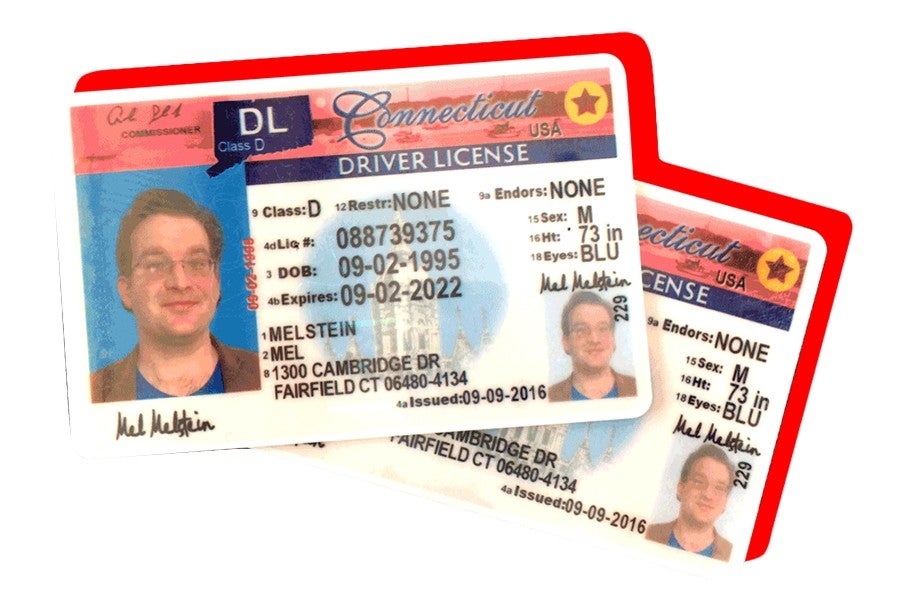
Not much has changed since 1994, I guess, because my first instinct was to tell all my friends. I couldn’t wait to bust into our afternoon edit meeting as if it were a friend’s dorm room, yelling that my fake ID has arrived and feeling all the excitement of a teen boy who has just received a pass to popularity and personhood.
“Drinks are on me tonight,” I say.
*Names have been changed to protect the underage who are doing everything they can to appear anything but.
